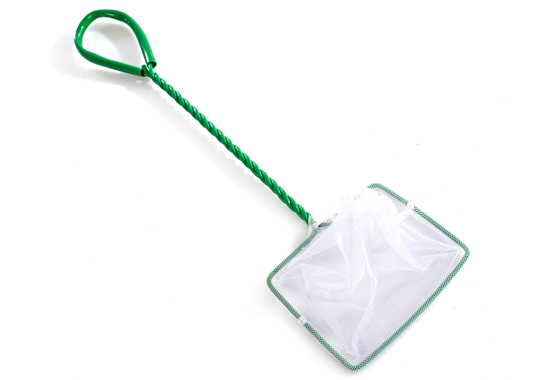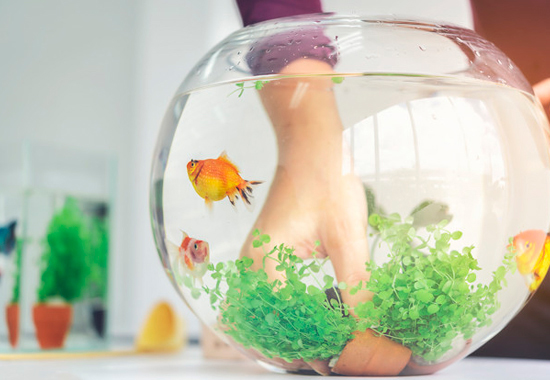
We are ready to improve your fish keeping experience. This article will help you create a splendid aqua world which not only will enhance the beauty of your house but will provide you a calm and peaceful environment to relax in your free time.
The first step in becoming a fish owner is creating the perfect space for your fish to keep them comfortable and lively.
Fish keeping is easy, fun, and informative. It is now becoming a popular hobby, and people enjoy keeping fish as pets. But, you need to learn the basics before jumping on the bandwagon. Let’s explore the basic things you need to learn for setting up the aquarium.
Things You Need to Buy for the Tank or Aquarium
- Gravel
Gravel is a loose aggregation of rock fragments. It is suitable for freshwater aquariums. It allows water to flow through it and stops the buildup of bacteria and aquarium mold inside the water.

- Live or artificial plants.
Artificial plants add beauty to the aquarium, but live plants serve many purposes. They prevent the growth of algae, produce oxygen in the daytime, stabilize the pH level and accumulate Carbon Dioxide produced by the fish.
- Ornaments for decoration
You can add different ornaments to your aquarium, e.g. clay pots, seashells, gems, driftwood, and ceramic figurines. Avoid putting sharp objects as they can hurt your fish.
- Fish Food
You can feed your fish with live food such as earthworms, water fleas, bloodworms, and feeder fish. Protein is essential when it comes to feeding your fish. Feed the Carnivores with 45% to 70% protein. Also, add a small amount of carbohydrates and fats to their food.
- Net
Net is crucial as you need to catch the fish when the aquarium needs to be cleaned. Buy at least one or two beforehand.

- Gravel Vacuum
A gravel vacuum keeps your aquarium clean and healthy. It makes it easier to siphon water from the aquarium. It can quickly clean the uneaten fish food, plant debris, and wastes that have fallen between the gravel spaces.
Point to Remember when setting the Aquarium

- Handle it Carefully
It is essential to keep in mind to move the aquarium when there is no water in it. It can be heavy when filled with water, so it will eventually fall and break. Don’t move the aquarium with wet hands or grasp it from the upper edges as it can collapse this way.
- Clean it Properly
Clean the tank with a damp cloth and don’t use any chemicals to harm the fish.
- Place it in a Suitable Location.
Place your aquarium at a place that is flat and near to electricity supply. Don’t place the aquarium near direct heat or under air conditioner as it can have adverse effects on the fish. Also, place it on something that can bear its weight.
- Add Gravel
Make sure you wash the gravel properly. Add 1.5 to 2 pounds of gravel per gallon.
- Fill the Aquarium
Don’t pour water directly as the gravel bed would get disturbed. Put a clean dish on top of the gravel and pour water over the plate. Put the water at room temperature and treat it with de-chlorinator before adding it to the aquarium. Make sure to add treated water as tap water contains large amounts of chlorine and chloramines. Never add untreated water as it will kill the fish.
- Decorate your Aquarium
You surely don’t want a plain and boring aquarium. Add aquatic plants or ornaments. Rinse all the items carefully before adding them to the aquarium. Place the plants in such a way that provides room for the fish to swim.

- Filtration is Important
Proper filtration is required to keep the fish healthy. It is done in three stages.
Stages of Filtration
Mechanical Filtration:
Fish waste and unwanted food is filtered through mechanical filtration. Poly fiber pad is used to trap the waste materials. This will keep the tank clean for a long period.
- Chemical Filtration
It is done by activated carbon as it absorbs wastes that can cause odor and discoloration in water. Activated carbon is packed in the cartridge in chemical filtration.
- Biological Filtration
In this filtration process, beneficial bacteria are allowed to grow inside the tank on gravel, ornaments, and artificial plants. These bacteria break toxic ammonia and nitrate in the water and help in biological filtration.
Temperature and Electricity
The factor of temperature depends on the breed of the fish. Most fish survive at room temperature; some need heat, whereas Goldfish and other cold-water fish can survive without heat. As mentioned earlier, place your aquarium near electricity supply as lighting is crucial for plants and it also enhances the colors of fish. You can find various light fixtures and can adjust them according to your requirements. Be careful before using the electricity supplies and use a GFCI (Ground Fault Circuit Interrupter) protected outlet as it will protect you from receiving electric shocks from faulty electric supplies. Use of excessive lighting can increase the growth of algae, so make sure to light your aquarium for 7 to 10 hours daily.
Precautions before Adding Fish to the Aquarium
Know the breed of your fish before buying them, as different fish have different temperature requirements. Let your aquarium operate for 24 hours before placing the fish and make sure it’s safe for them. Ask the pet store owner to give you basic knowledge regarding the fish you are willing to buy or do some research on the internet.
Precautions after Adding Fish to the Aquarium
Add a few fish in the beginning, to check if the environment is suitable for them. Later, add more within four to six weeks. Buy healthy and active fish. Don’t stuff in the aquarium with several fish as it will be less appealing and hard to handle. Adjust the water temperature accordingly. Feed them twice a day as much as they can eat in five minutes or you can search the feeding time according to the breed of your fish.
Maintain the New Aquatic World
All you need to do is make sure your aquarium/tank remains clean. A clean environment is necessary for the fish to stay healthy and active. Change the filter cartridge when needed as well as change the water after two to four weeks or when it appears cloudy and yellowish. Keep a check on the gravel and vacuum them to remove the waste materials from its surface. If the water smells bad even after proper maintenance, it’s a sign that you have abundant of fish in the tank. Remember to add the same temperature water when refilling the tank, as it might shock your fish if the temperature varies from the previous one. Now, you are all set to be a fish owner. Keep all these tips in mind and you will be an expert fish keeper.
Happy Fish Keeping!

Categories: Fish keeping, Tags:
More Related Posts
How to keep a betta fish tank?
- Aquarium Maintenance
- Fish keeping
Date Posted - August 28, 2023
How Often do Tetras Breed? Everything About Tetras and its Types
- Aquarium Maintenance
- Fish keeping
Date Posted - August 02, 2023




